Known for its national parks and gorgeous mountain ranges, the mountains of Washington state serve as popular destinations for tourists to take in the majestic views and for locals to explore the bountiful hiking trails available. Well known mountains like Mount Rainier and Mount Saint Helens have become must-see destinations for anyone visiting Washington for the first time.
From its most famous peaks to its lesser-known mountains, there are so many beautiful mountains to discover, explore, and see in Washington State. Below are 20 mountains you can discover in Washington state, each from different mountain ranges.
Mount Deception
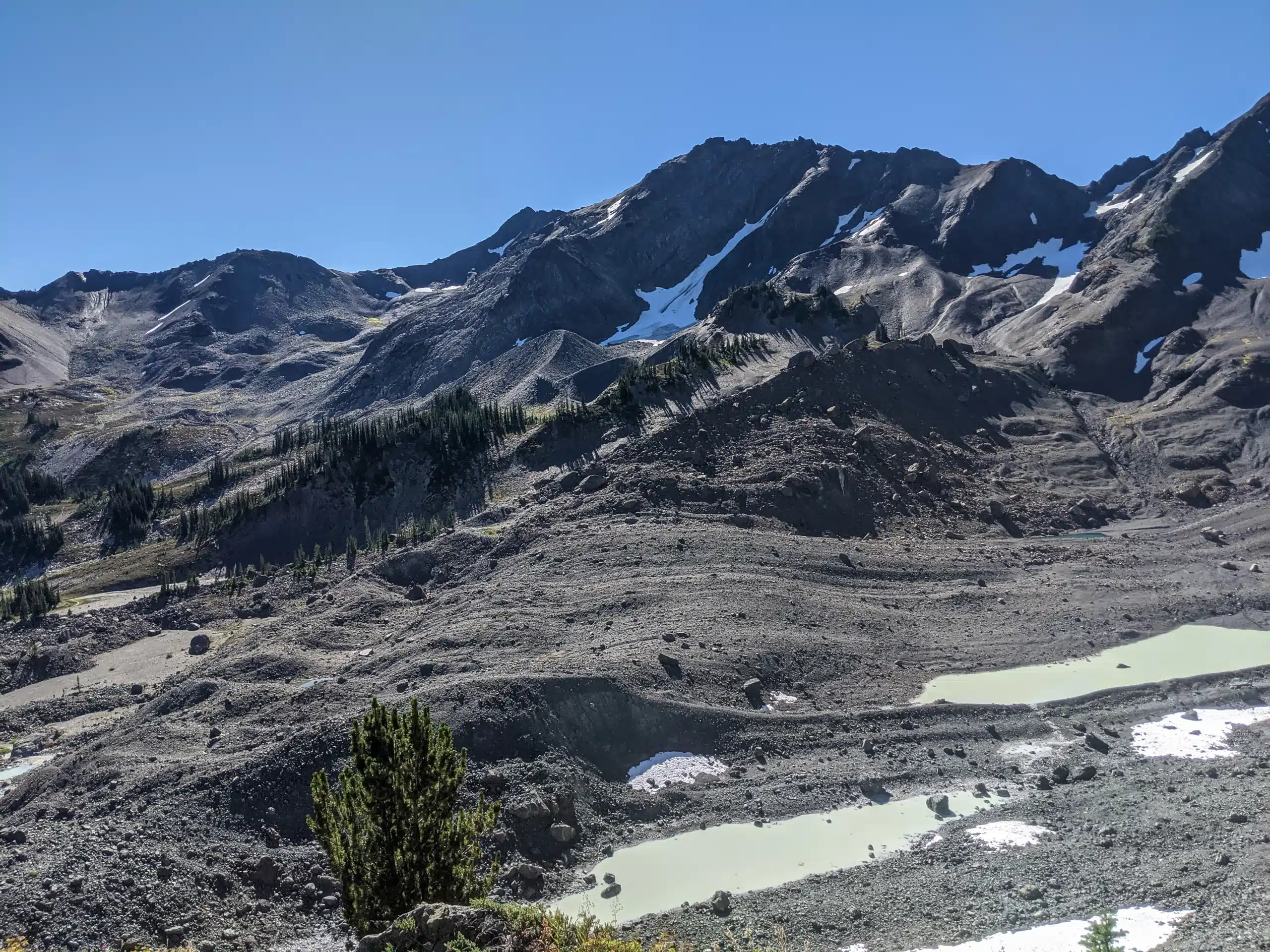
Located in the Central Olympic Mountains of Cascadia, Mount Deception is the second highest peak in the Olympic Range and the 17th tallest peak in the entire state. This mountain is also part of the Olympic National Park on the Olympic Peninsula and lies at the head of the Royal Basin area between Deception Creek and Royal Creek.
Despite its towering size, Mount Deception is not visible from Seattle. Originally named Mount Holmes, the mountain was renamed to Mount Deception as it became known for being deceptively difficult to climb, including several fatalities. The climb itself is not extremely technical but is rather steep. The National Park recommends that climbers have experience in rock climbing and route finding before attempting this mountain.
Pinnacle Mountain
This mountain is known for its geologic makeup. Known as a granitic multi-peak mountain, Pinnacle Mountain is made up of minerals from the Cardinal Peak pluton, including granodiorite and hornblende quartzite diorite. This results in the mountain being made of material that greatly resembles granite at first glance but is in fact its own unique mineral, making it fascinating to look at.
Pinnacle Mountain is located in the Chelan Mountains. It is part of the Glacier Peak Wilderness of the North Cascades and is on land that is managed by the Wenatchee National Forest. With an elevation of 8,400 feet, Pinnacle Mountain is the fourth tallest peak in the Chelan Mountains.
Goode Mountain
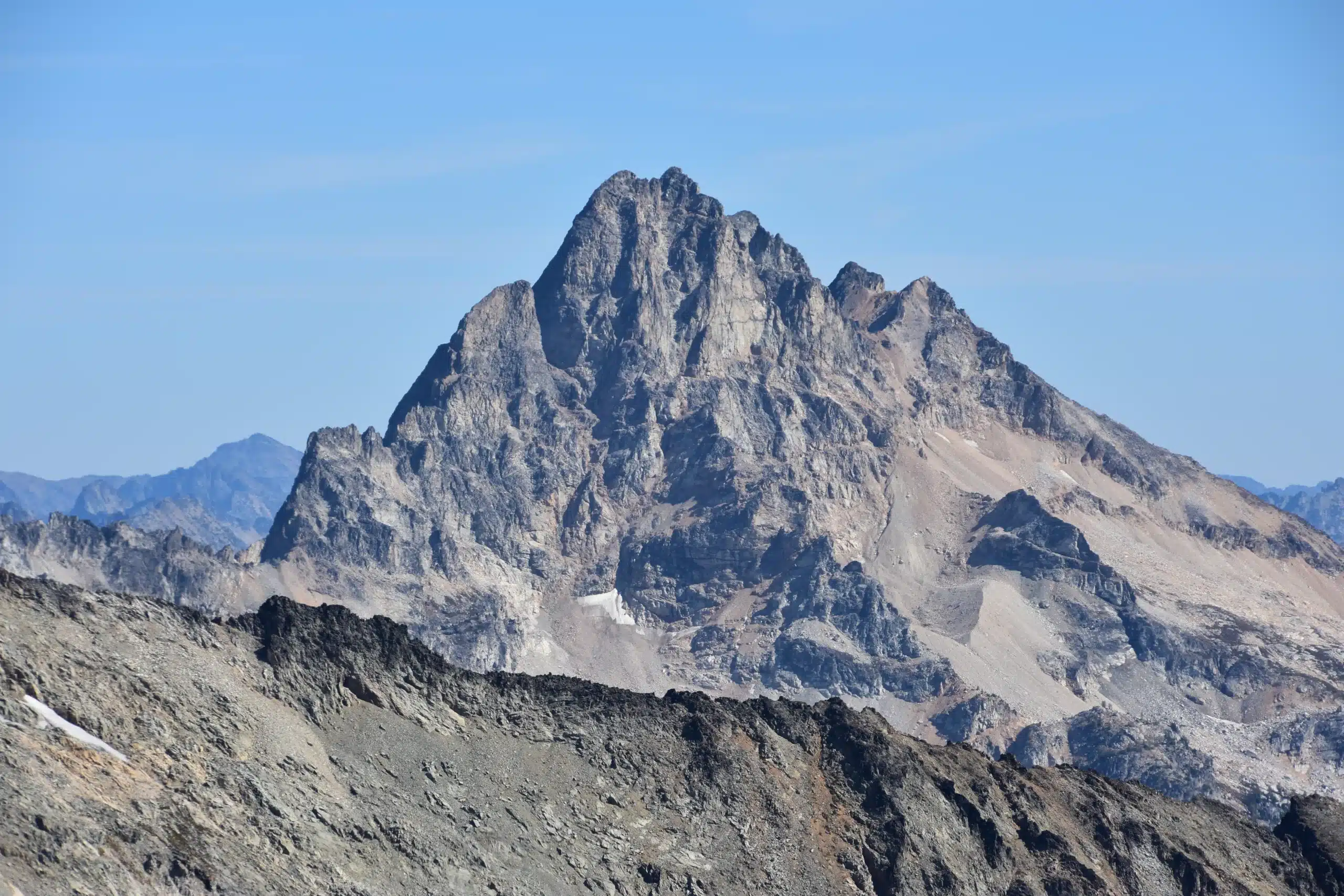
Known as one of the major peaks in the North Cascades, Goode Mountain was named after topographer Richerd Urquhart Goode from the United States Geological Survey. It is the tallest peak in the North Cascades National Park, located between the Skagit River and Lake Chelan. Goode Mountain is the 4th tallest non-volcanic mountain in the state and the 12th highest summit in the state overall.
Despite its enormous height, Goode Mountain is not typically visible from major roads as its location is greatly isolated. The mountain features several hiking routes, with the easiest route being established in 1936. There are other gorgeous natural features to be found on the mountain, including Greenview Lake, Memaloose Ridge, and Goode Ridge.
Mount Constance

Part of the sprawling Olympic Mountain, Mount Constance is the 3rd highest in the entire mountain range and is known as the most visually prominent peak when viewed from Seattle. The mountain was named by surveyor George Davidson in 1853 at the same time after the name of his wife’s older sister.
Even though the mountain was discovered and named in 1853, the first climb wasn’t until 1922. Mount Constance can be accessed via the Buckhorn Wilderness Area. The mountain features its own lake and pass, named Constance Lake and Constance Pass respectively.
Glacier Peak
Also known as Dakobed, Glacier Peak is part of the North Cascades Range and is known as the most isolated stratovolcano of the Cascade Volcanic Arc. Glacier Peak is also one of the most active volcanoes in the state. It is the only volcano to erupt in Washington state besides Mount St. Helens in the last 15,000 years.
Glacier Peak can be viewed from the west part of Seattle as it is only 70 miles away from downtown Seattle. Technically speaking, Glacier Peak is closer to Seattle than Mount Rainier but due to it being significantly shorter than Mount Rainier, it is not as noticeable. Glacier Peak is located in the Glacier Peak Wilderness, which is part of the Mount Baker-Snoqualmie National Forest.
Crater Mountain
Named after its crater shaped summit, Crater Mountain is part of the North Cascades and is considered the 29th highest mountain in the Pasayten Wilderness. Despite its summit’s shape, Crater Mountain is not of volcanic origin. The mountain is known for its predominant makeup of greenstone from the Jurassic to Permian periods.
Crater Mountain is often easily viewed from the North Cascades Highway. It is known for its unusual shape, with a noticeable half circle dip in its peak. Despite the fact that it is easy to spot, the mountain is relatively isolated, with an isolation distance measured of almost 3 miles.
Oval Peak
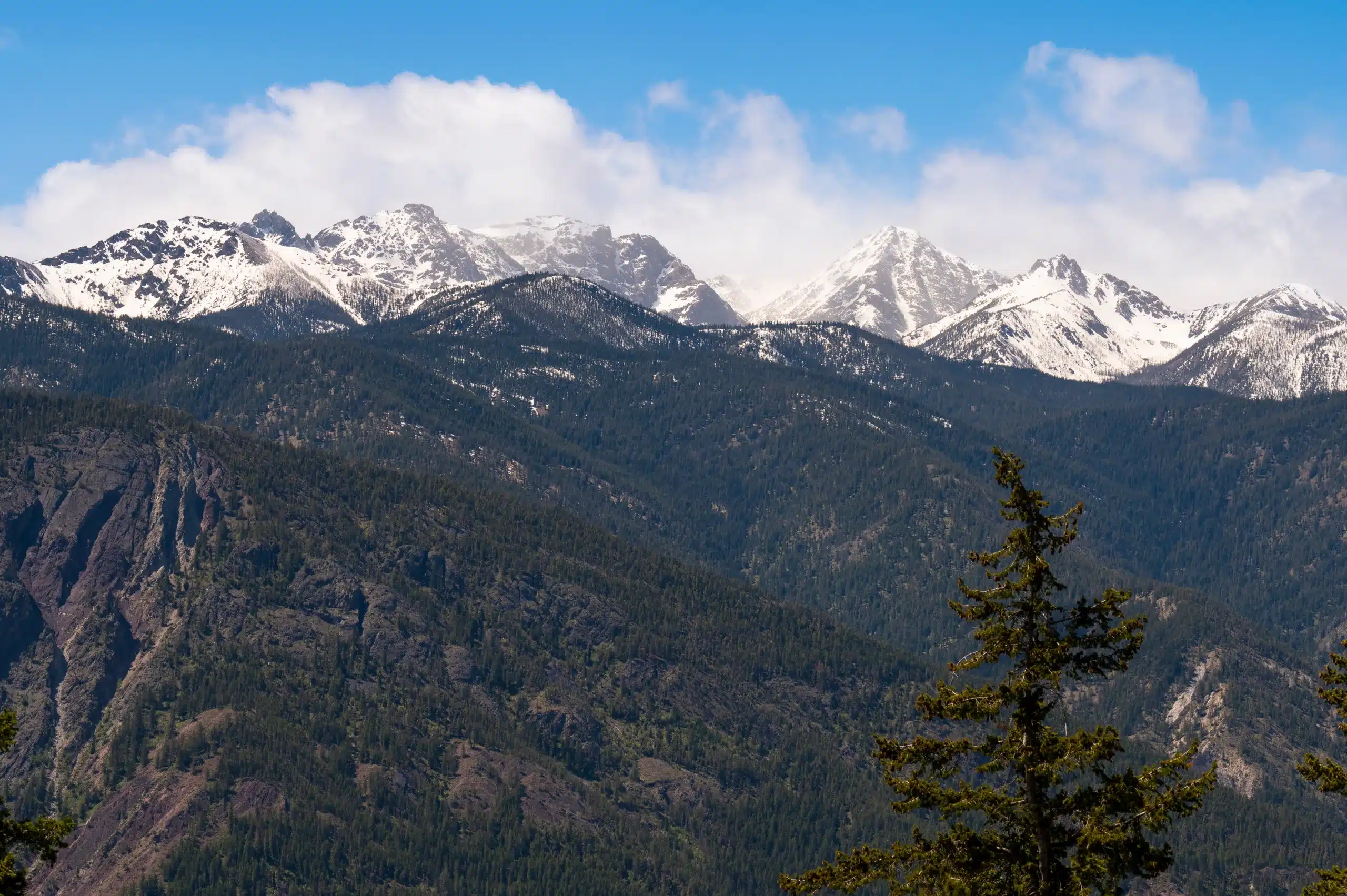
Part of the Methow Mountains in the North Cascades, Oval Peak is also protected by the Lake Chelan-Sawtooth Wilderness in the Okanogan-Wenatchee National Forest. Oval Peak is unique in that it has its own small rock glacier on its slopes.
Due to its height, Oval Peak can have snow on it in late spring or early fall and the winter weather is quite harsh on it. Most people climb Oval Peak in early July through October, although the climb can be quite hard due to the amount of talus on its slopes. Adventurous climbers can find a summit register at the mountain’s peak.
Mount Adams
Known as Pahto or Klickitat by Native American tribes, Mount Adams is the second highest mountain in Washington state, after Mount Rainier. Located in the Cascade Range, Mount Adams is considered as a potentially active stratovolcano. It has not erupted in more than 1,000 years but it is not entirely extinct yet.
Named after President John Adams, Mount Adams is one of the largest volcanoes in the Cascade Volcanic Arc. It has its own wilderness on the upper and western parts of the volcano’s cone called the Mount Adams Wilderness. The summit is uniquely flat due to cone-building eruptions. There are 25 main routes available that visitors can take to the mountain’s summit.
Mount Rainier
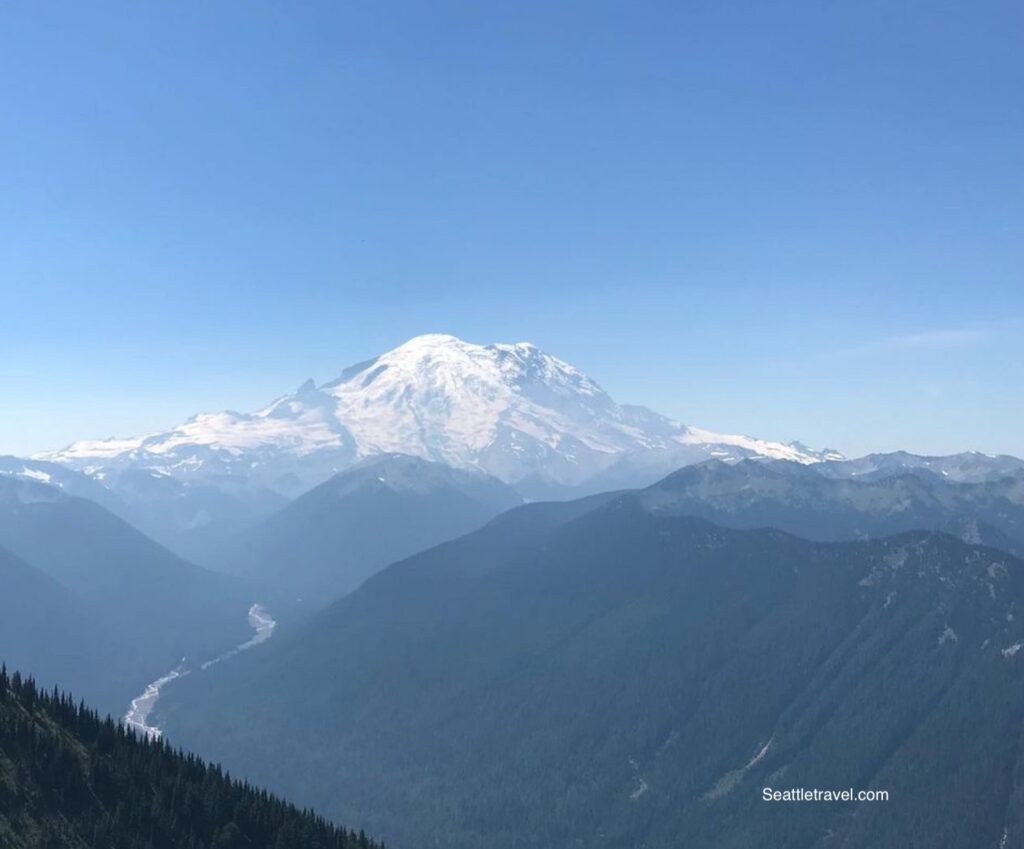
Proudly boasting the title of tallest mountain in Washington state, Mount Rainier is the largest active stratovolcano in the Cascade Range and is considered to be one of the most dangerous volcanoes in the world. Despite its daunting height and the potential volcanic threat, Mount Rainier National Park brings in thousands of visitors who come to see, explore, hike, and climb the gorgeous mountain.
Its enormous height makes the mountain easily viewable from Seattle, arguably making it one of the visual landmarks of the city and an icon of the state. Mount Rainier has plenty of hiking trails that are relatively easy but the climbing routes are far more difficult.
Mount St. Helens
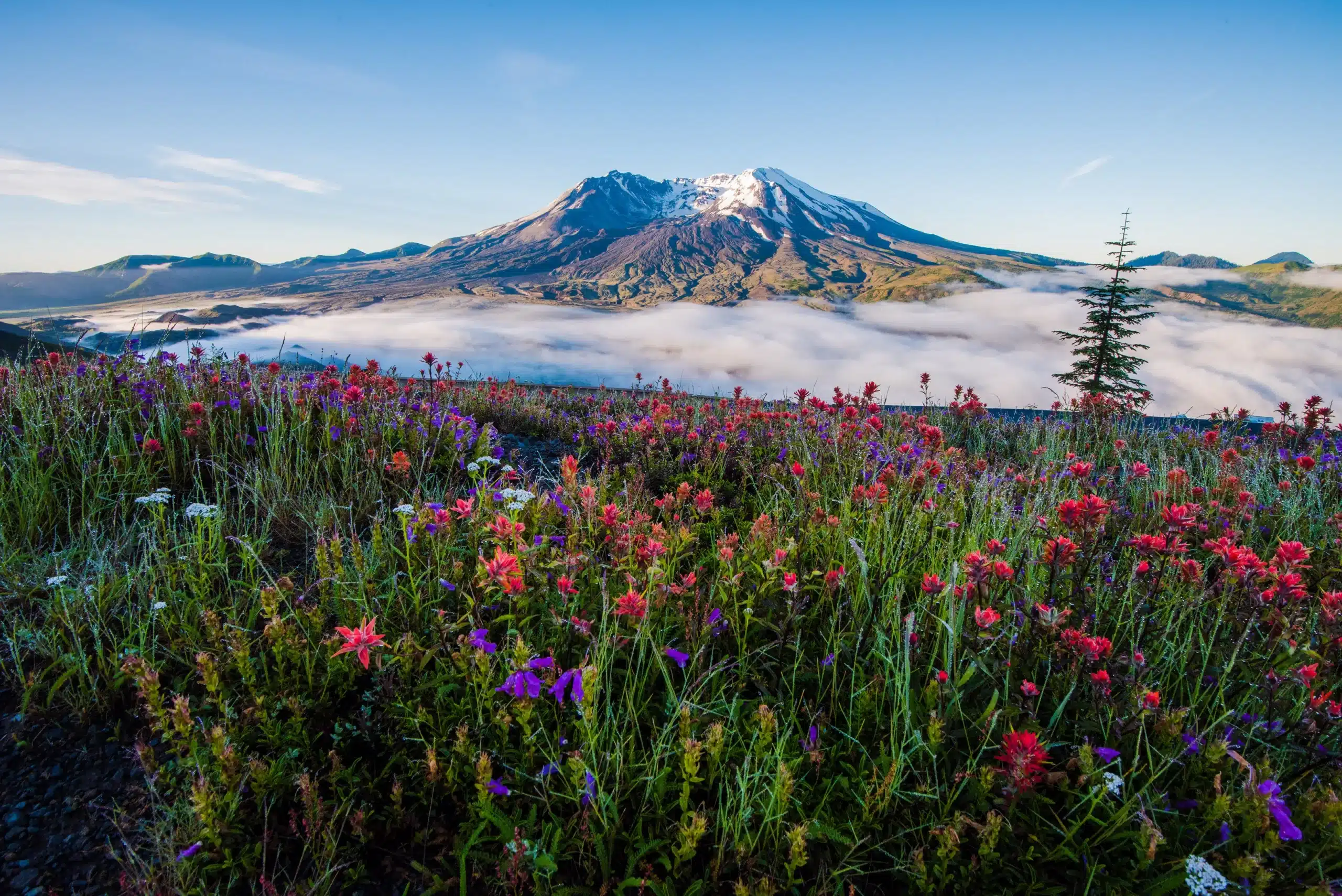
Arguably the most famous mountain in the state, Mount St. Helens is the most thermally active stratovolcano in the state and is responsible for the deadliest volcanic event in the history of the United States. The eruption destroyed the top part of the mountain, reducing the summit’s elevation greatly, and resulted in the deaths of 57 people.
Despite its active status and continuous volcanic activity up until 2008, Mount St. Helens is a popular hiking spot and is open year round to visitors. It was also designated as a national volcanic monument in 1982, further adding to its reputation.
Three Fingers
Named after the fact that it has 3 summits, Three Fingers is located in the Cascade Range in Snohomish County. It is the 12th most prominent peak in the state and is one of the most recognizable landmarks in the northern part of Snohomish County.
Three Fingers has a fire lookout on its southernmost peak that is part of the National Register of Historic Places. Today, Three Fingers is a popular spot for recreational climbing. It has a 15 mile long round-trip trail that starts at the east side of the mountain. The trailhead can be found on the Mountain Loop Highway.
Mount Olympus

Not to be confused with the famous mountain of Greek mythology with the same name, Mount Olympus is the most prominent mountain in the Olympic Mountains in western Washington. It is also an integral part of the Olympic National Park, located on the Olympic Peninsula.
Mount Olympus supports multiple large glaciers including the Blue, Hoh, Humes, Jeffers, Hubert, Black, and White glaciers. The mountain was first named on July 4, 1788 but the first climb wasn’t until 1890. In 1938, the mountain was designated as part of a national park by President Franklin D. Roosevelt and was later declared a World Heritage Site. Today, guests can visit the mountain within the park and even climb it. The easiest route is the Glacier Climb.
Chopaka Mountain
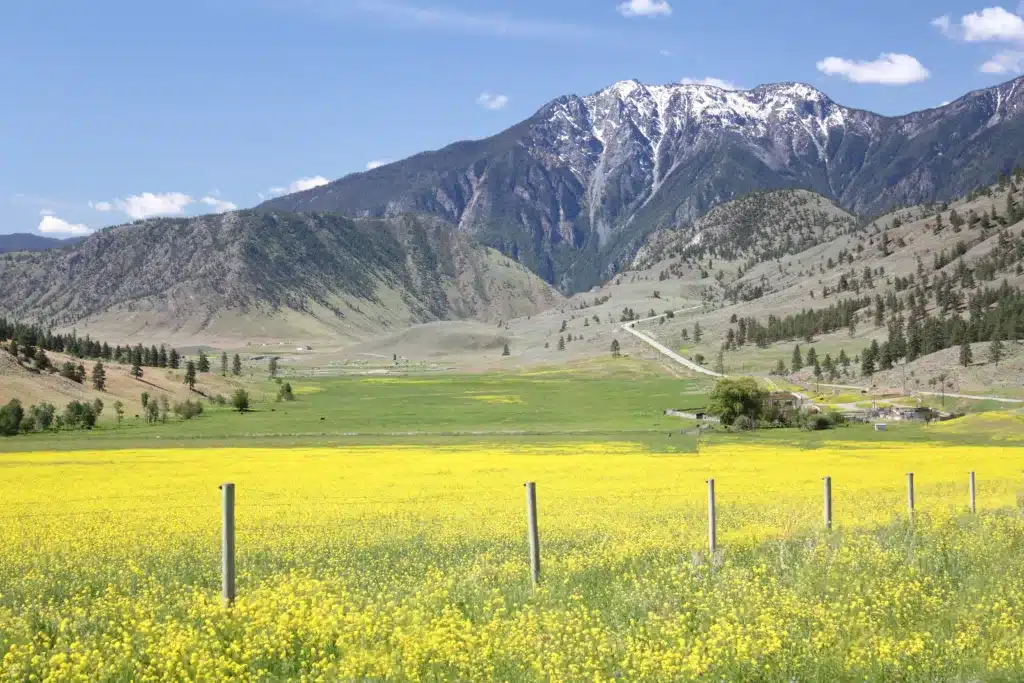
Also known as Mount Chopaka, this mountain is part of the North Cascades. It also extends into Okanogan Range in British Columbia. The summit is a Natural Area Preserve known for its rare plants and wild mountain goat population. It was also the home of the last surviving native herd of bighorn sheep in Washington state before they were hunted out in the 1920’s.
The mountain’s name has a unique origin stemming from folk tales of either a hunter being turned into stone by a coyote or a maiden that was transformed into stone. Chopaka Mountain has its own lake, named Chopaka Lake, which is a popular spot for fly fishers and is known for its population of rainbow trout.
Gypsy Peak
Known as the highest mountain in eastern Washington, Gypsy Peak is part of the Selkirk Mountains which straddles the borders of eastern Washington, northern Idaho, and southeastern British Columbia. Gypsy Peak is known as a challenging but rewarding hike as hikers can take in views of Canada and Idaho easily due to the hike being above the treeline.
Gypsy Peak is home to bighorn sheep and bears, with its eastern trailhead named “Bear Pasture” due to the presence of grizzly bears. The other trail route, known as “Crowell Ridge”, is longer and more difficult but hikers can also reach Watch Lake from this route if they so choose.
Mount Baker
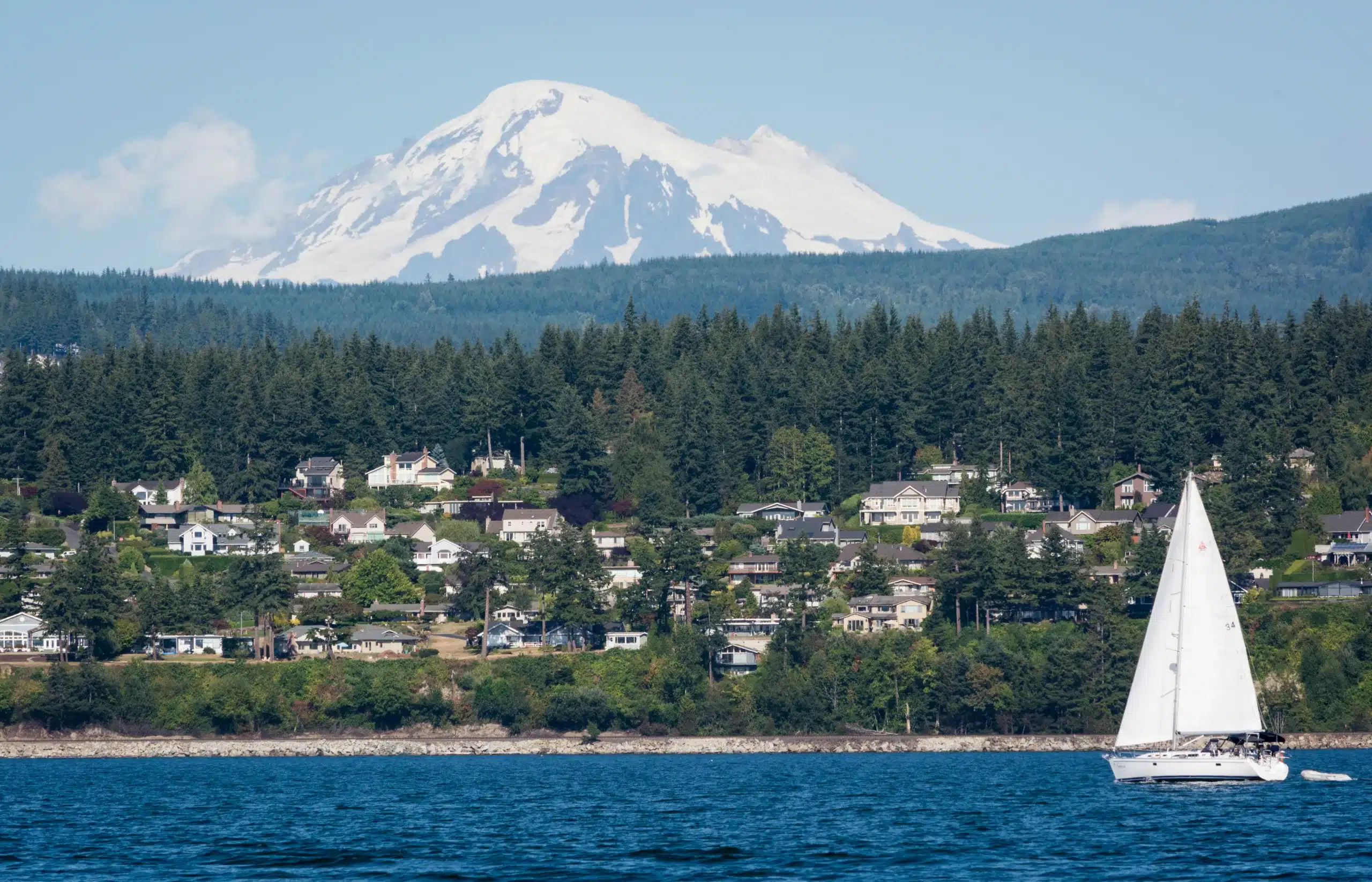
Also known as Koma Kulshan, Mount Baker is part of the North Cascades and is located in the Cascade Volcanic Arc. Mount Baker is an active stratovolcano, the second-most thermally active after Mount St. Helens. The mountain is also covered in glaciers and known as one of the snowiest places in the entire world.
Mount Baker is the third highest mountain in the entire state, which combined with its high amount of snowfall has made it an ideal spot for winter recreation. The Mount Baker Ski Area is situated on the northeast side of the mountain, popular for its backcountry skiing and challenging routes.
Crystal Mountain
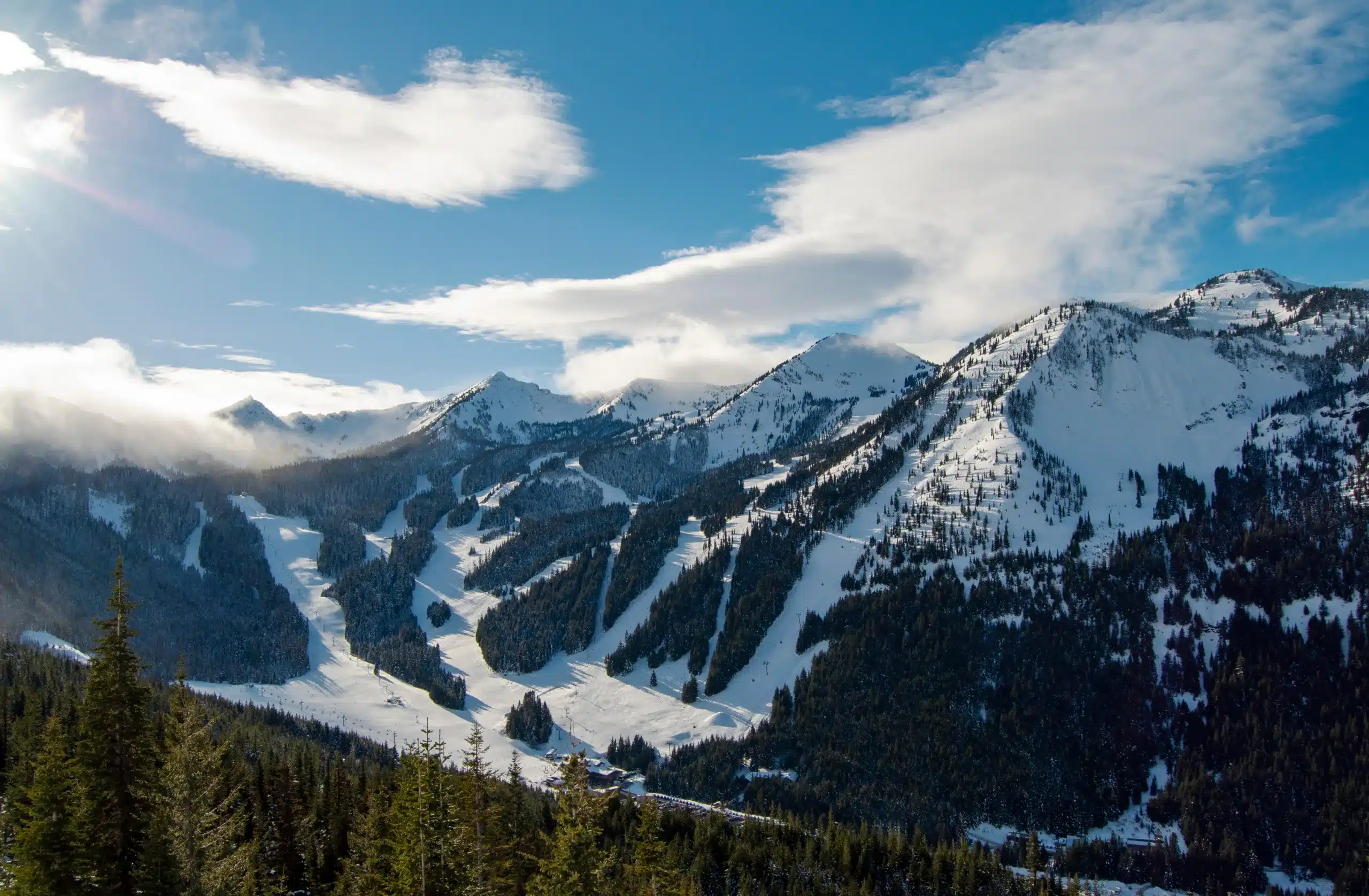
This popular alpine ski area is part of the Cascade Range. Located in the Mount Baker-Snoqualmie National Forest, Crystal Mountain is home to the largest ski resort in Washington state. Due to its popularity, the mountain is easily accessible from State Route 410.
Beyond skiing, Crystal Mountain also has a scenic gondola ride, a summit restaurant, an aerial adventure course, mining sluice, disc golf, and camping areas. Multiple hiking trails are available, the shortest being 0.7 miles and the longest being 6 miles.
Gilbert Peak
Located in the Cascade Range, Gilbert Peak is actually part of the Goat Rocks Wilderness which is on the border of the Yakama Indian Reservation and Yakima County. Gilbert Peak is the highest summit in the Goat Rocks area, which is actually made out of the remnants of an extinct stratovolcano.
Gilbert Peak has 2 glaciers attached to it. To the southeast is Meade Glacier and to the north is Conrad Glacier. The mountain is climbable although many consider the trek to be somewhat difficult. Visitors can climb all the way to the summit which has a geodetic marker and a crafted cross memorial for a fallen mountaineer.
Abercrombie Mountain
Known as the highest point in Stevens County, Abercrombie Mountain is located in the Selkirk Mountains in the Colville National Forest. It is known as one of the ultra prominent peaks in the United States and is the 7th most prominent peak in Washington state.
Although the name Abercrombie is more closely associated with the clothing brand, the mountain was actually named after Lieutenant William R. Abercrombie. He explored the Pend Oreille River, located near the mountain, in 1879 and 1883.
Unicorn Peak

Although many people visit Mount Rainier National Park to take in the mountain views, not many know about Unicorn Peak. Located to the south of Mount Rainier, Unicorn Peak is indeed part of the national park. It is the highest point in the Tatoosh Range and is named after its unique appearance, resembling a unicorn’s horn.
Unicorn Peak has multiple small glaciers, including Unicorn Glacier, which all drain into tributaries of the Cowlitz River. It is possible to climb Unicorn Peak, although climbing experience and gear is required to do so. From the summit, climbers can get a particularly spectacular view of nearby Mount Rainier.
Mount Stuart
Located almost directly in the center of Washington state, Mount Stuart is the second-highest non-volcanic mountain and 7th highest overall mountain in the state. It is the tallest peak in the Stuart Range and is located in the Alpine Lakes Wilderness. Stevens Pass is directly to the south while Snoqualmie Pass is to the east.
Mount Stuart was named after the best friend of the man who first discovered the mountain in 1853. The naming served as a memorial as said friend died 2 years prior. Today, hikers and climbers can ascend the mountain via multiple routes, typically taking the Cascadian Couloir route up the southeastern part of the mountain.
The image featured at the top of this post is ©Seattle Travel/.


